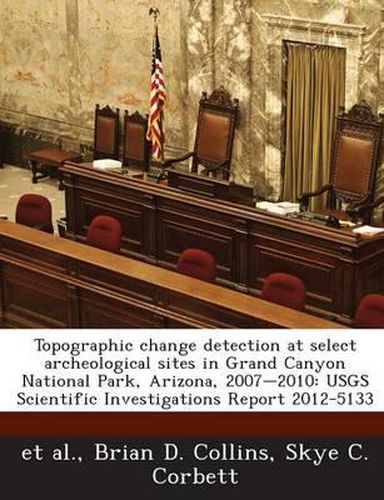Readings Newsletter
Become a Readings Member to make your shopping experience even easier.
Sign in or sign up for free!
You’re not far away from qualifying for FREE standard shipping within Australia
You’ve qualified for FREE standard shipping within Australia
The cart is loading…






Human occupation in Grand Canyon, Arizona, dates from at least 11,000 years before present to the modern era. For most of this period, the only evidence of human occupation in this iconic landscape is provided by archeological sites. Because of the dynamic nature of this environment, many archeological sites are subject to relatively rapid topographic change. Quantifying the extent, magnitude, and cause of such change is important for monitoring and managing these archeological sites. Such quantification is necessary to help inform the continuing debate on whether and how controlled releases from Glen Canyon Dam, located immediately upstream of Grand Canyon National Park, are affecting site erosion rates, artifact transport, and archeological resource preservation along the Colorado River in Grand Canyon. Although long-term topographic change resulting from a variety of natural processes is inherent in the Grand Canyon region, continued erosion of archeological sites threatens both the archeological resources and our future ability to study evidence of past cultural habitation. Thus, this subject is of considerable interest to National Park Service managers and other stakeholders in the Glen Canyon Dam Adaptive Management Program. Understanding the causes and effects of archeological site erosion requires a knowledge of several factors, including the location, timing, and magnitude of the changes occurring in relation to archeological resources, the rates of change, and the relative contribution of potential causes. These potential causes include sediment depletion associated with managed flows from Glen Canyon Dam, site-specific weather and overland flow patterns, visitor impacts, and long-term regional climate change.
$9.00 standard shipping within Australia
FREE standard shipping within Australia for orders over $100.00
Express & International shipping calculated at checkout
Human occupation in Grand Canyon, Arizona, dates from at least 11,000 years before present to the modern era. For most of this period, the only evidence of human occupation in this iconic landscape is provided by archeological sites. Because of the dynamic nature of this environment, many archeological sites are subject to relatively rapid topographic change. Quantifying the extent, magnitude, and cause of such change is important for monitoring and managing these archeological sites. Such quantification is necessary to help inform the continuing debate on whether and how controlled releases from Glen Canyon Dam, located immediately upstream of Grand Canyon National Park, are affecting site erosion rates, artifact transport, and archeological resource preservation along the Colorado River in Grand Canyon. Although long-term topographic change resulting from a variety of natural processes is inherent in the Grand Canyon region, continued erosion of archeological sites threatens both the archeological resources and our future ability to study evidence of past cultural habitation. Thus, this subject is of considerable interest to National Park Service managers and other stakeholders in the Glen Canyon Dam Adaptive Management Program. Understanding the causes and effects of archeological site erosion requires a knowledge of several factors, including the location, timing, and magnitude of the changes occurring in relation to archeological resources, the rates of change, and the relative contribution of potential causes. These potential causes include sediment depletion associated with managed flows from Glen Canyon Dam, site-specific weather and overland flow patterns, visitor impacts, and long-term regional climate change.